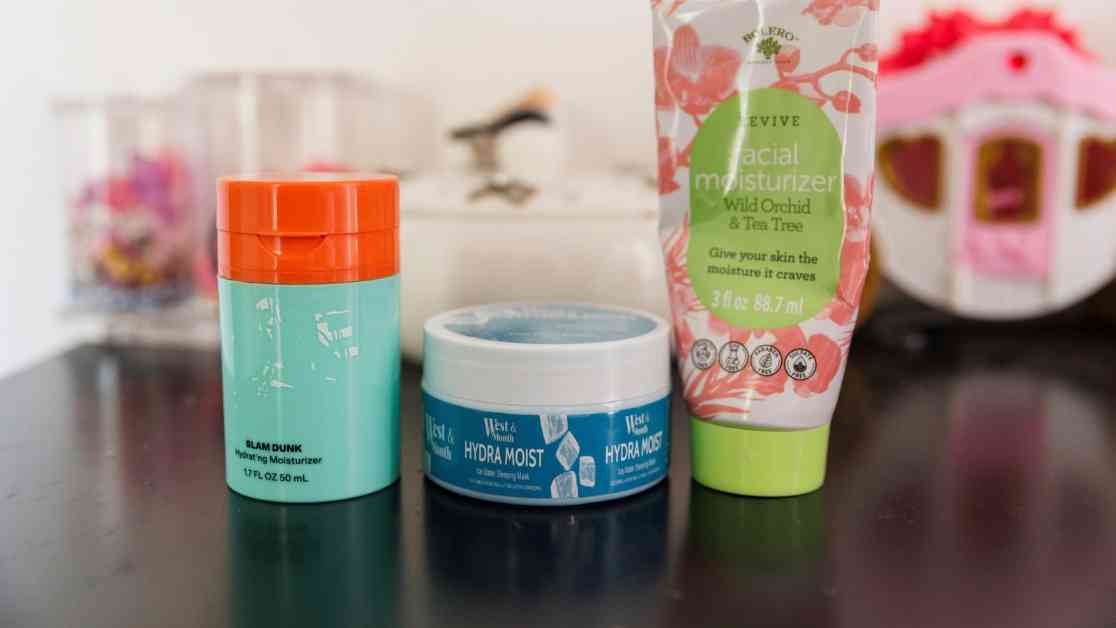Title: Dermatologist-Recommended Skin Care Routines for Teens and Preteens: Navigating Social Media Influences
In today’s digital age, social media plays a significant role in shaping the beauty standards and skincare routines of young girls. With influencers promoting elaborate skincare regimens filled with high-priced products, it can be overwhelming for teens and preteens to navigate the world of skincare. However, dermatologists emphasize that simplicity is key when it comes to skincare for young individuals.
Dr. Sheilagh Maguiness, a respected dermatologist based in Minneapolis, stresses the importance of sticking to the basics when it comes to skincare for preteens. According to her, all kids need before puberty hits are a gentle cleanser, a moisturizer, and sunscreen. She firmly states, “That’s it. Full stop. You don’t need anything else.”
Despite the simplicity advocated by experts like Dr. Maguiness, there has been a concerning trend of young girls using anti-aging skincare products. Many popular products from brands like Drunk Elephant and Glow Recipe, which can cost upwards of $70, contain active ingredients like retinols and hydroxy acids that are meant for mature skin. These ingredients can potentially irritate young skin and damage the skin barrier, leading to long-term consequences.
Dr. Dendy Engelman, a dermatologist in Manhattan, shares her observations on the increasing fixation of teens and preteens on skincare products and social media trends. She notes that many young individuals are going overboard with their skincare routines, influenced by what they see online. This obsession with achieving a certain look can also have negative implications for their mental health, as they strive to meet unrealistic beauty standards.
As parents and caregivers navigate this fast-growing trend of skincare obsession among teens and preteens, it’s crucial to understand what is safe and effective for young skin. Dermatologists unanimously agree that anti-aging products are unnecessary for younger individuals, as stated by the Personal Care Products Council. Instead, they recommend gentle cleansers and moisturizers from trusted brands like Cetaphil, CeraVe, and La Roche-Posay, which are readily available in drug stores.
When puberty hits, teenagers may start experiencing skin issues like acne, excess oil, dark spots, and blackheads due to hormonal changes. In such cases, it’s advisable to consult a dermatologist to address specific concerns. Introducing new products should be done gradually, especially if they contain harsh ingredients. Dr. Maguiness suggests conducting a skin test on a small area, like the inner arm, before applying it to the face to check for any adverse reactions.
Signs of an allergic reaction, such as redness, itching, flaking, burning, or tiny bumps, should not be ignored. Dr. Carli Whittington emphasizes the importance of discontinuing the use of products that cause irritation to prevent further damage to the skin. It’s essential for parents to educate their children about harmful ingredients in trendy products and encourage them to make informed choices about their skincare routines.
Dr. Brooke Jeffy from Scottsdale, Arizona, shares a cautionary tale of an 11-year-old patient who developed a severe rash around her eyes from using a retinol eye cream. The young girl’s skin condition worsened as she continued using the product, highlighting the potential risks of using skincare products unsuitable for young skin. Dermatologists like Dr. Jeffy are actively debunking harmful social media trends through platforms like TikTok and Instagram, offering valuable insights on skincare do’s and don’ts for tweens.
In light of the growing trend of elaborate skincare routines among young individuals, setting boundaries and time limits for skincare can be beneficial. Engelman suggests treating skincare as a routine task, similar to brushing teeth, to instill healthy habits in children. Spending excessive time and money on skincare products may not necessarily yield better results and can potentially harm the skin in the long run.
While the focus on skincare trends can have negative implications, there is a silver lining in the form of increased awareness about sun protection. Engelman notes that many teens and preteens are diligent about applying sunscreen, a crucial step in protecting the skin from harmful UV rays. By incorporating sunscreen into their skincare routines, young individuals are taking a proactive approach to maintaining healthy skin.
As parents engage with their skincare-obsessed children, it’s essential to have open conversations about the viral trends they are following and the potential impact on their skin health. Encouraging critical thinking and asking questions about the motives behind celebrity endorsements and product promotions can help young individuals make informed decisions about their skincare routines.
In conclusion, dermatologists stress the importance of simplicity, safety, and education when it comes to skincare for teens and preteens. By prioritizing basic skincare essentials, avoiding unnecessary products, and seeking professional advice when needed, young individuals can establish healthy habits that promote long-term skin health. As the skincare landscape continues to evolve with social media influences, empowering young individuals to make informed choices about their skincare routines is essential for their overall well-being.

















